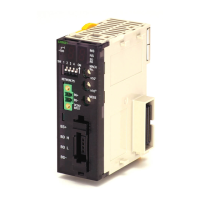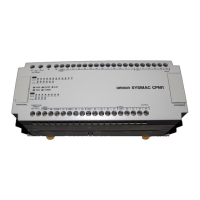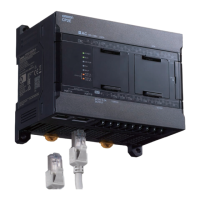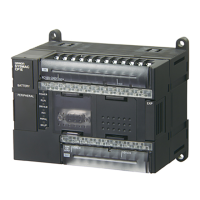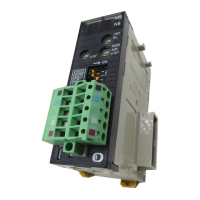3. Instructions
408
CS/CJ/NSJ Series Instructions Reference Manual (W474)
z Output example
* Parity bit - changes according to the parity specification.
When CIO 0.00 is ON in the following example, HEX(162) converts the ASCII data in D10 beginning
with the rightmost byte and writes the hexadecimal equivalents in D300 beginning with digit 1.
The digit designator setting of #1011 specifies even parity, the starting byte (when reading) = rightmost
byte, the number of bytes to read = 2, and the starting digit (when writing) = digit 1.)
Conversion data Output result (hex data)
ASCII
code
(MSB) bit content (LSB) Value Bit content
#30*011000000000
#31*011000110001
#32*011001020010
#33*011001130011
#34*011010040100
#35*011010150101
#36*011011060110
#37*011011170111
#38*011100081000
#39*011100191001
#41*1000001A1010
#42*1000010B1011
#43*1000011C1100
#44*1000100D1101
#45*1000101E1110
#46*1000110F1111
S: D100
D: D300
Number of bytes (2 bytes)
Starting digit (digit 1)
Parity bits: Result in even parity
Not changed
Not changed
Conversion
Parity: Even
Starting byte: rightmost
Starting digit in D: Digit 1
Number of bytes: 2
Starting byte in S: Rightmost
D10
D300
0.00

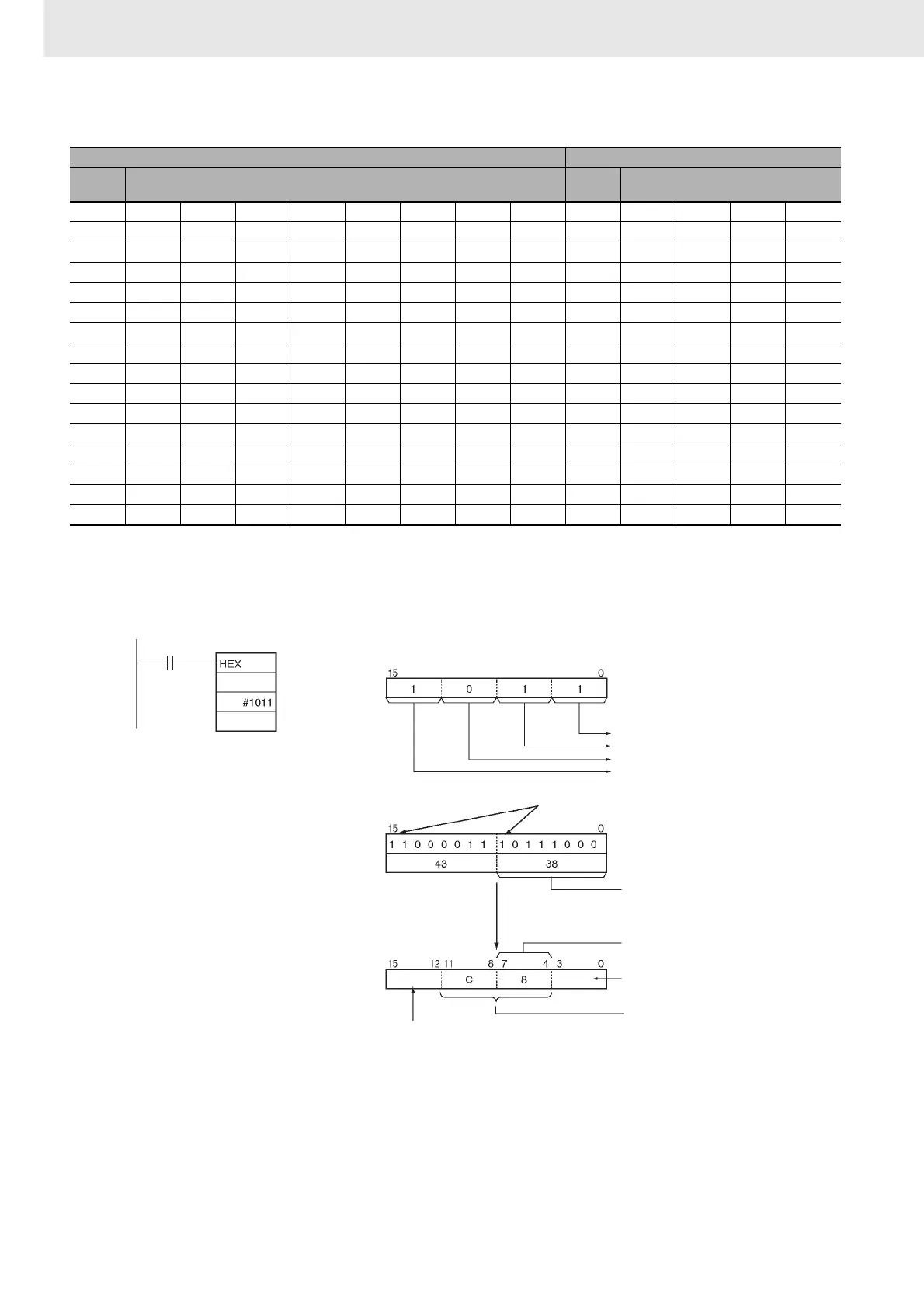